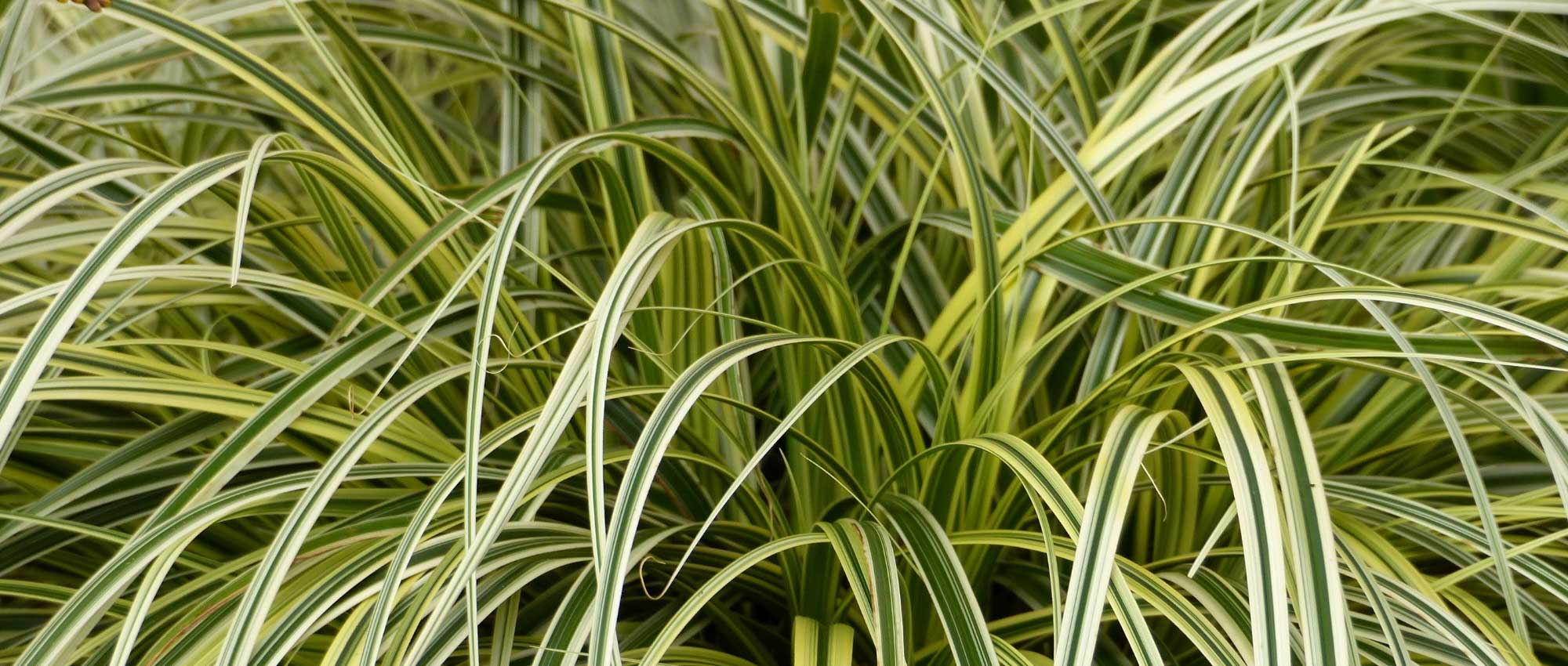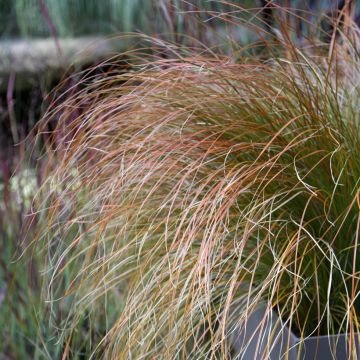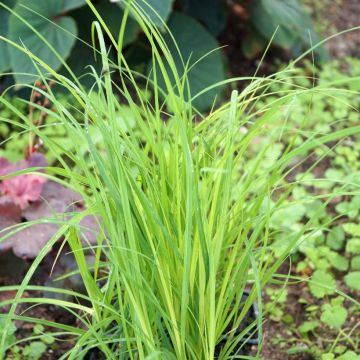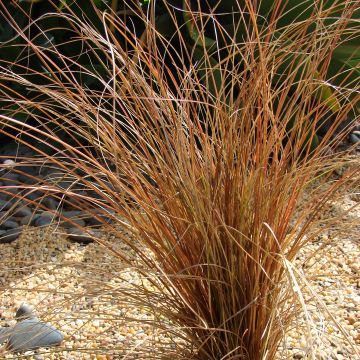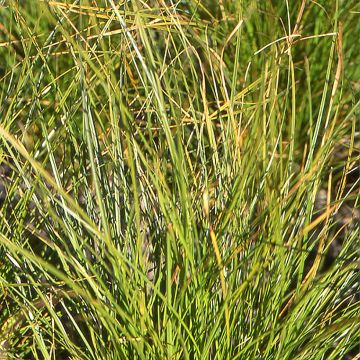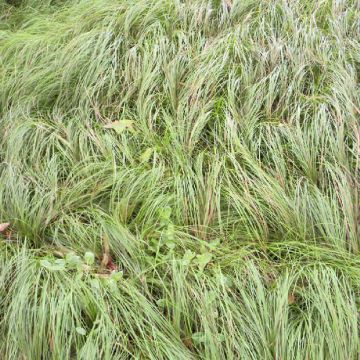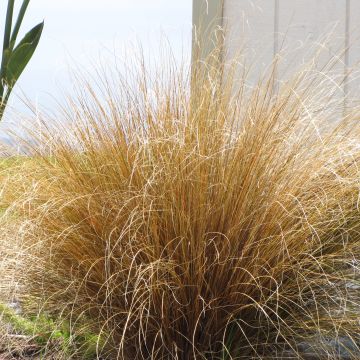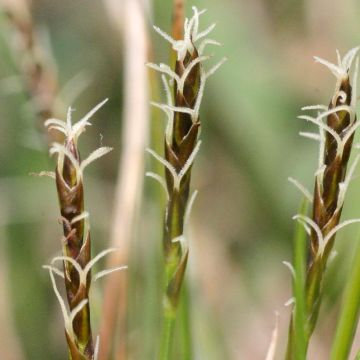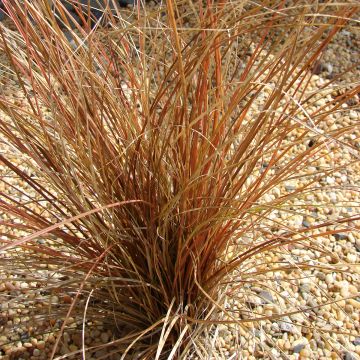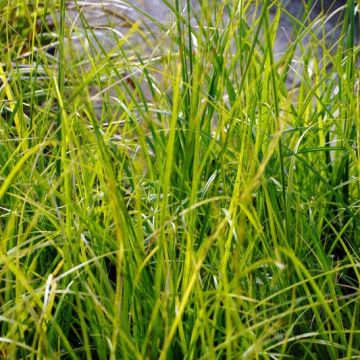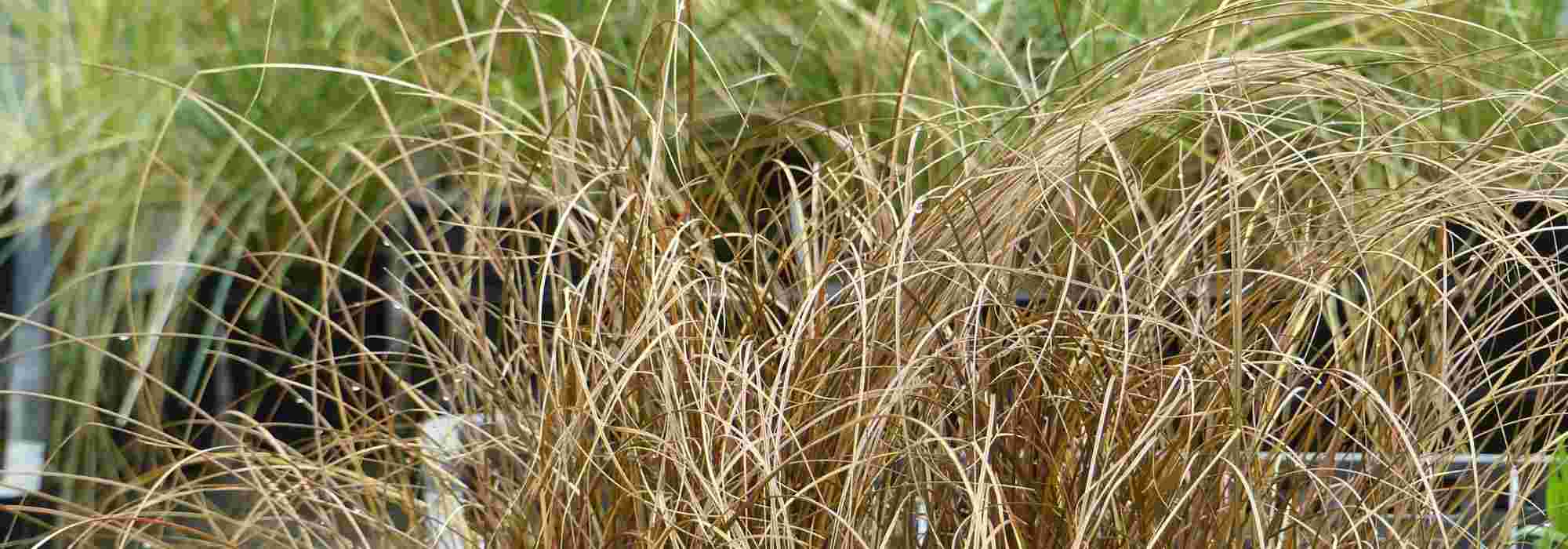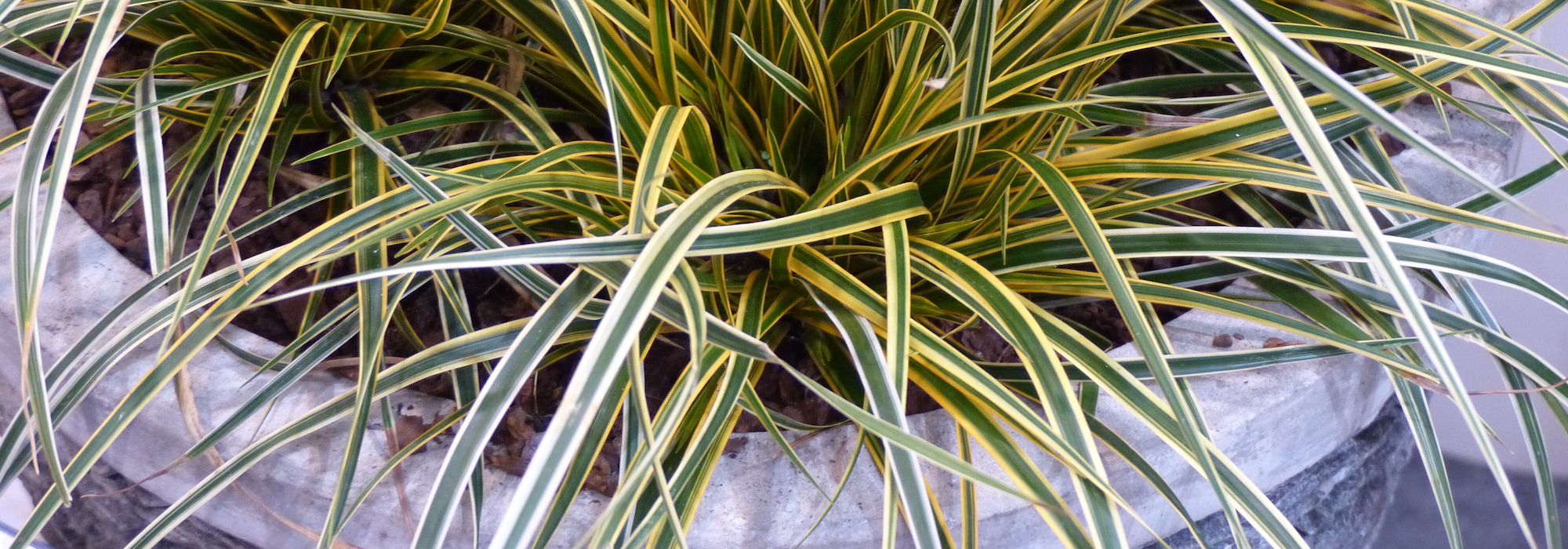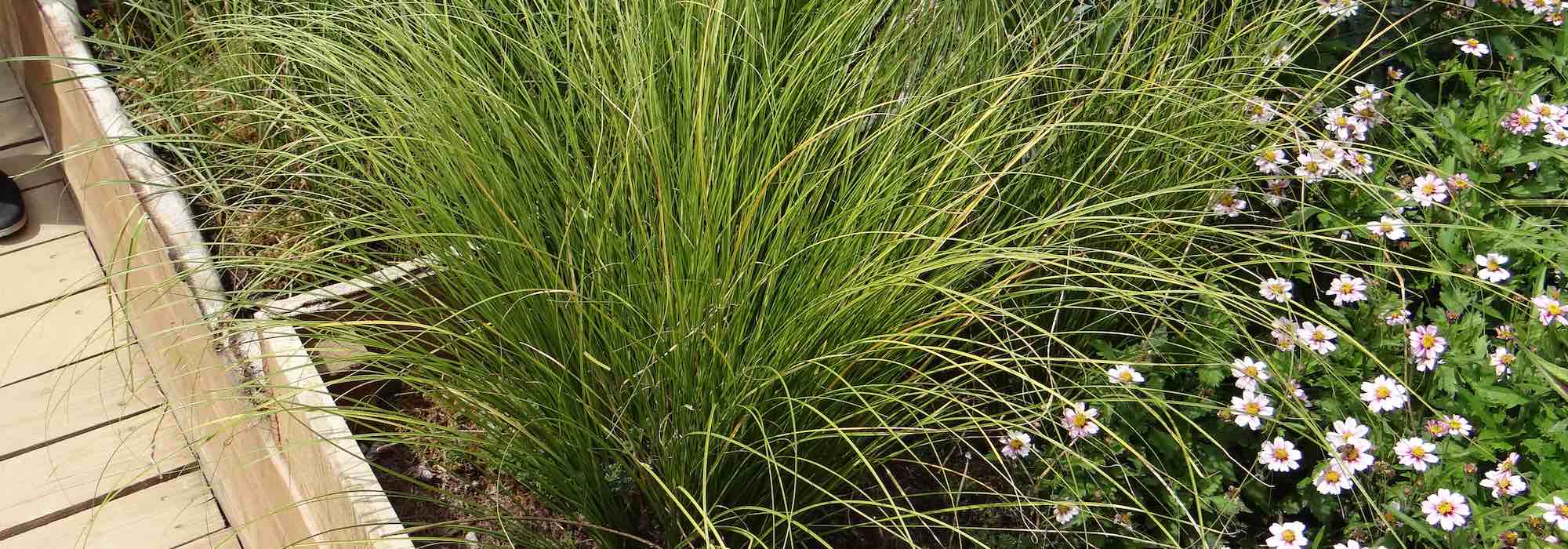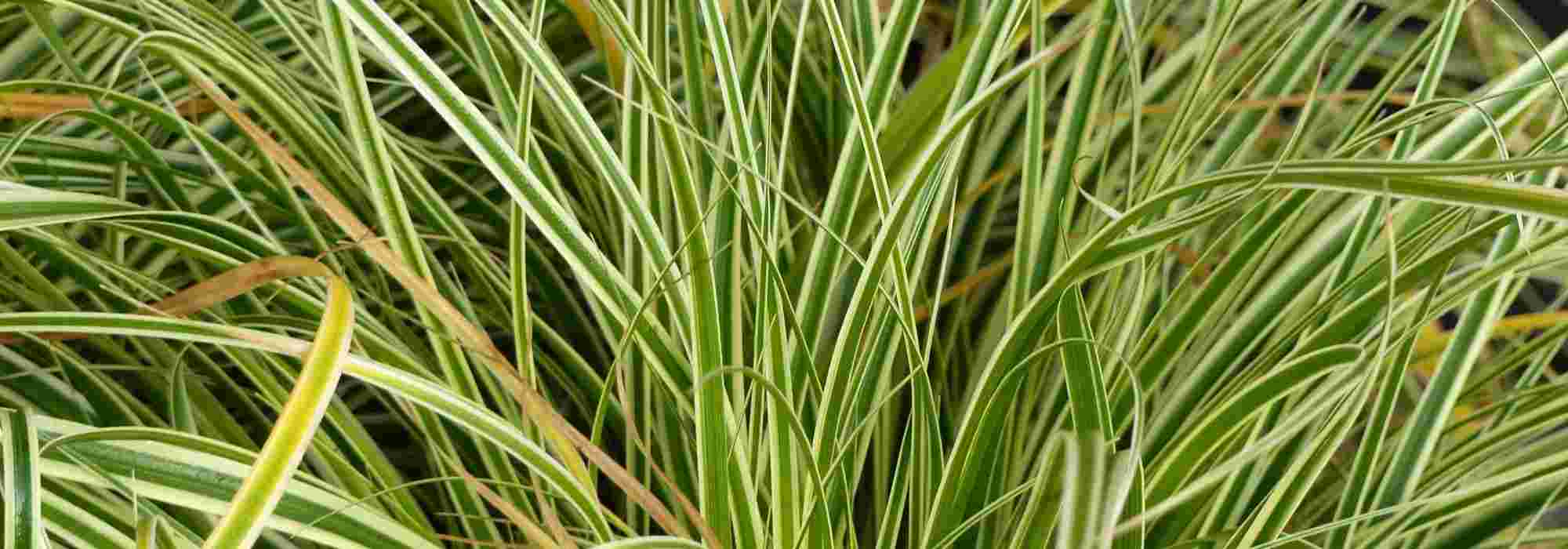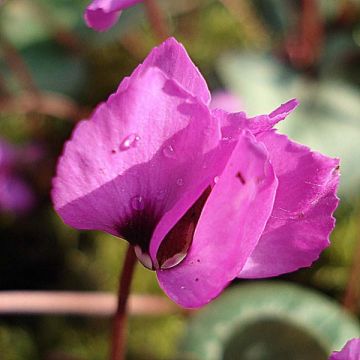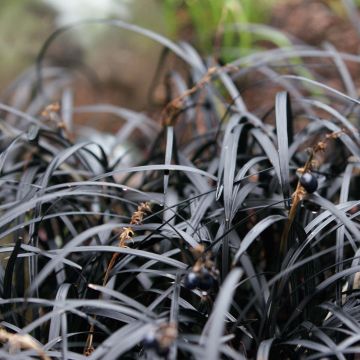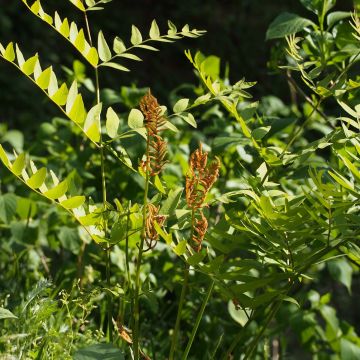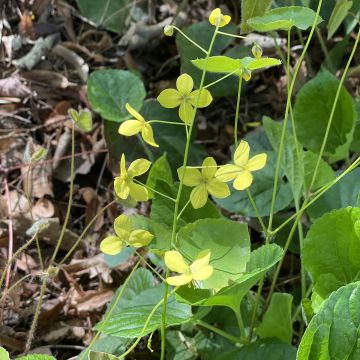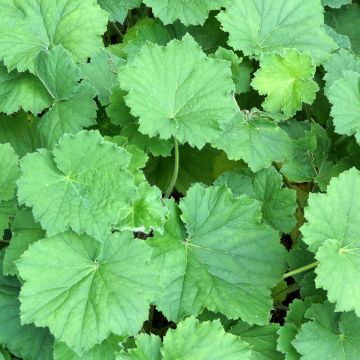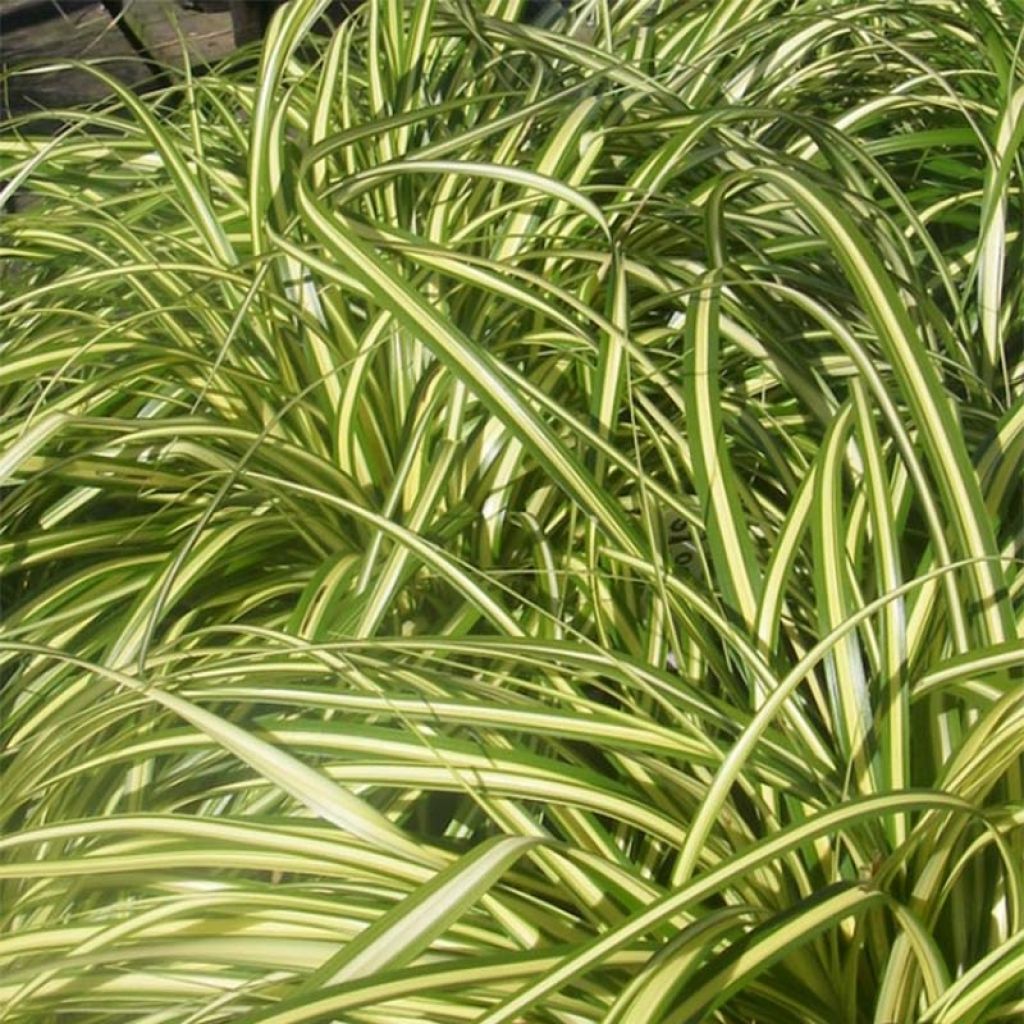

Carex morrowii Aureovariegata
Carex morrowii Aureovariegata
Carex morrowii subsp. foliosissima Aureovariegata
Japanese Sedge, Morrow's Sedge
Beautiful young plant but after 2 years, the plant grows too much, rootstocks develop at least 60 cm (24in) away from the center, far from the announced dimensions of 30 x 30. So, either make space or eliminate the new shoots.
Guillaume, 08/05/2022
Special offer!
Receive a €20 voucher for any order over €90 (excluding delivery costs, credit notes, and plastic-free options)!
1- Add your favorite plants to your cart.
2- Once you have reached €90, confirm your order (you can even choose the delivery date!).
3- As soon as your order is shipped, you will receive an email containing your voucher code, valid for 3 months (90 days).
Your voucher is unique and can only be used once, for any order with a minimum value of €20, excluding delivery costs.
Can be combined with other current offers, non-divisible and non-refundable.
Home or relay delivery (depending on size and destination)
Schedule delivery date,
and select date in basket
This plant carries a 12 months recovery warranty
More information
We guarantee the quality of our plants for a full growing cycle, and will replace at our expense any plant that fails to recover under normal climatic and planting conditions.
Would this plant suit my garden?
Set up your Plantfit profile →
Description
Carex morrowii 'Aureovariegata' is a perennial ground cover for undergrowth. Its flexible, evergreen foliage is strongly marginated with yellow and green. It lights up the dark corners of the garden. It forms compact clumps with gracefully trailing leaves, spreading with its short rhizomes. In spring, green-brown aerial spikes emerge from its clump. This sedge thrives in moist but not waterlogged soils in shaded locations. It can tolerate full sun if the soil moisture is sufficient. It is an easy-to-grow and low maintenance plant that can also be used in borders or flower beds, as long as the soil is not too dry. It is a hardy and robust plant, capable of withstanding dense shade and tree roots.
'Aureovariegata' is a sedge belonging to the large Cyperaceae family, native to Japan. This small herbaceous perennial with short rhizomes forms a soft clump, with a compact, upright and trailing habit, reaching about 30cm (12in) in all directions. Its evergreen leaves are arched, sheathing at the base, measuring 4 to 8mm (1in) in width. Their edges are tapered and their tips trailing. In spring, 3 to 4 upright and closely spaced spikes appear among the foliage, carried by slender stems rising above the clumps. It produces underground stolons allowing it to form beautiful dense clumps without becoming invasive. The foliage remains decorative throughout winter, even when temperatures drop below -13°C (8.6°F), as we experienced in January 2009. Carex morrowii 'Aureovariegata' prefers rich, cool to moist soil, even clayey, that does not dry out too much in summer. It thrives in partial shade and tolerates competition from other plants.
'Aureovariegata' is a small 'herb' with refined foliage and a clean style, which will create a dense bouquet of foliage in the shade, covering the ground and discouraging weeds. It can be paired with Milium effusum 'Aureum', Geranium vivace 'Czackor', or even Vinca minor 'Atropurpurea'. Its design does not require the presence of another plant by its side, but it will bring lightness to the lush foliage of rodgersia and the plumes of ferns. It also pairs well with colourful heucheras. As this grass appreciates cool to moist soils, it naturally finds its place in water gardens, among mossy stones, arranged on banks or along water features, where it helps stabilise the soil. It can also be placed along the edges of perennial beds. For a beautiful wild effect, plant it en masse, in a contemporary or country garden.
The name 'Carex' comes from the Greek 'keirein', which means to cut, referring to their sharp leaves and stems.
Carex morrowii Aureovariegata in pictures
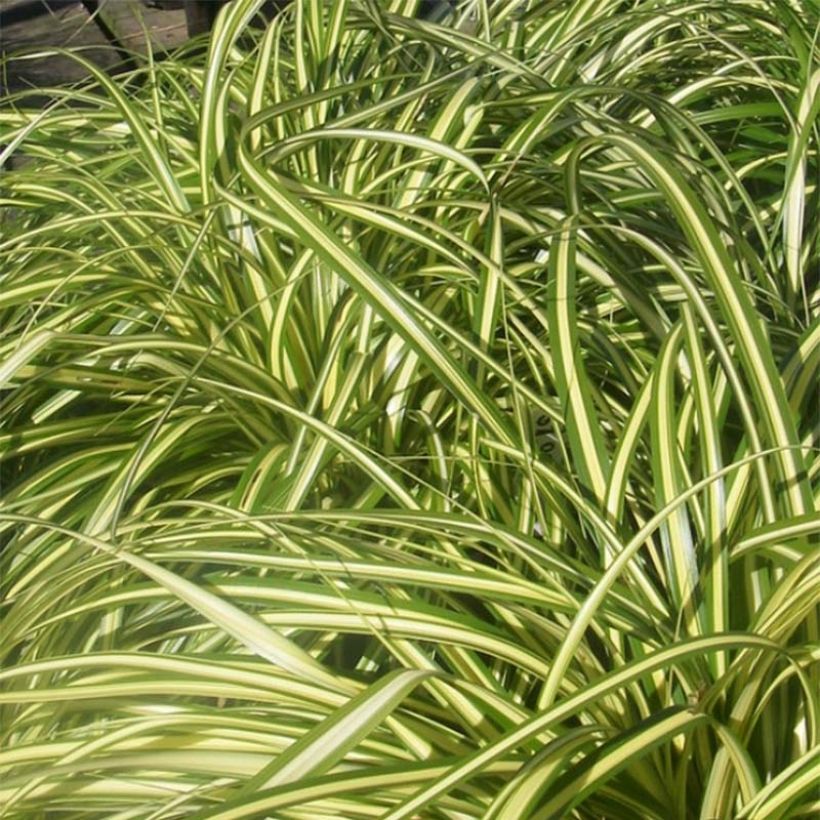

Flowering
Foliage
Plant habit
Botanical data
Carex
morrowii subsp. foliosissima
Aureovariegata
Cyperaceae
Japanese Sedge, Morrow's Sedge
Cultivar or hybrid
Other Carex
View all →Planting and care
Carex morrowii 'Aureovariegata' prefers moist, not too chalky soils. It tolerates wet areas well, but dreads waterlogged soils in winter. It requires a semi-shaded or even shaded exposure, sheltered from direct sunlight. It can tolerate full sun as long as the soil remains moist. It tolerates moderate and short periods of drought fairly well. This easy-to-grow grass requires very little maintenance. Plant when all risk of frost has passed. Water generously when planting. Avoid excessive fertiliser inputs. Remove damaged foliage during the growing season and prune the clump at the end of winter, just before the start of the growing season.
Planting period
Intended location
Care
Planting & care advice
-
, onOrder confirmed
Reply from on Promesse de fleurs
Similar products
Haven't found what you were looking for?
Hardiness is the lowest winter temperature a plant can endure without suffering serious damage or even dying. However, hardiness is affected by location (a sheltered area, such as a patio), protection (winter cover) and soil type (hardiness is improved by well-drained soil).

Photo Sharing Terms & Conditions
In order to encourage gardeners to interact and share their experiences, Promesse de fleurs offers various media enabling content to be uploaded onto its Site - in particular via the ‘Photo sharing’ module.
The User agrees to refrain from:
- Posting any content that is illegal, prejudicial, insulting, racist, inciteful to hatred, revisionist, contrary to public decency, that infringes on privacy or on the privacy rights of third parties, in particular the publicity rights of persons and goods, intellectual property rights, or the right to privacy.
- Submitting content on behalf of a third party;
- Impersonate the identity of a third party and/or publish any personal information about a third party;
In general, the User undertakes to refrain from any unethical behaviour.
All Content (in particular text, comments, files, images, photos, videos, creative works, etc.), which may be subject to property or intellectual property rights, image or other private rights, shall remain the property of the User, subject to the limited rights granted by the terms of the licence granted by Promesse de fleurs as stated below. Users are at liberty to publish or not to publish such Content on the Site, notably via the ‘Photo Sharing’ facility, and accept that this Content shall be made public and freely accessible, notably on the Internet.
Users further acknowledge, undertake to have ,and guarantee that they hold all necessary rights and permissions to publish such material on the Site, in particular with regard to the legislation in force pertaining to any privacy, property, intellectual property, image, or contractual rights, or rights of any other nature. By publishing such Content on the Site, Users acknowledge accepting full liability as publishers of the Content within the meaning of the law, and grant Promesse de fleurs, free of charge, an inclusive, worldwide licence for the said Content for the entire duration of its publication, including all reproduction, representation, up/downloading, displaying, performing, transmission, and storage rights.
Users also grant permission for their name to be linked to the Content and accept that this link may not always be made available.
By engaging in posting material, Users consent to their Content becoming automatically accessible on the Internet, in particular on other sites and/or blogs and/or web pages of the Promesse de fleurs site, including in particular social pages and the Promesse de fleurs catalogue.
Users may secure the removal of entrusted content free of charge by issuing a simple request via our contact form.
The flowering period indicated on our website applies to countries and regions located in USDA zone 8 (France, the United Kingdom, Ireland, the Netherlands, etc.)
It will vary according to where you live:
- In zones 9 to 10 (Italy, Spain, Greece, etc.), flowering will occur about 2 to 4 weeks earlier.
- In zones 6 to 7 (Germany, Poland, Slovenia, and lower mountainous regions), flowering will be delayed by 2 to 3 weeks.
- In zone 5 (Central Europe, Scandinavia), blooming will be delayed by 3 to 5 weeks.
In temperate climates, pruning of spring-flowering shrubs (forsythia, spireas, etc.) should be done just after flowering.
Pruning of summer-flowering shrubs (Indian Lilac, Perovskia, etc.) can be done in winter or spring.
In cold regions as well as with frost-sensitive plants, avoid pruning too early when severe frosts may still occur.
The planting period indicated on our website applies to countries and regions located in USDA zone 8 (France, United Kingdom, Ireland, Netherlands).
It will vary according to where you live:
- In Mediterranean zones (Marseille, Madrid, Milan, etc.), autumn and winter are the best planting periods.
- In continental zones (Strasbourg, Munich, Vienna, etc.), delay planting by 2 to 3 weeks in spring and bring it forward by 2 to 4 weeks in autumn.
- In mountainous regions (the Alps, Pyrenees, Carpathians, etc.), it is best to plant in late spring (May-June) or late summer (August-September).
The harvesting period indicated on our website applies to countries and regions in USDA zone 8 (France, England, Ireland, the Netherlands).
In colder areas (Scandinavia, Poland, Austria...) fruit and vegetable harvests are likely to be delayed by 3-4 weeks.
In warmer areas (Italy, Spain, Greece, etc.), harvesting will probably take place earlier, depending on weather conditions.
The sowing periods indicated on our website apply to countries and regions within USDA Zone 8 (France, UK, Ireland, Netherlands).
In colder areas (Scandinavia, Poland, Austria...), delay any outdoor sowing by 3-4 weeks, or sow under glass.
In warmer climes (Italy, Spain, Greece, etc.), bring outdoor sowing forward by a few weeks.






























